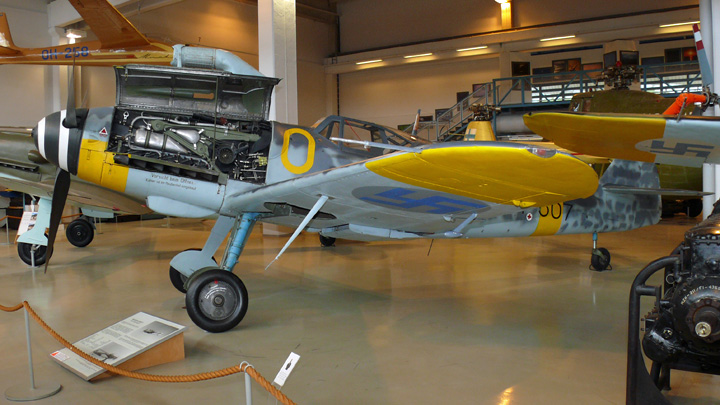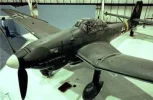Heinkel had been a critic of Hitler's regime concerning being forced to fire
Jewish designers and staff in 1933, however, he was a member of the Nazi party,
[5] awarded the
German National Prize for Art and Science in 1938, one of the rarest honors of the German government,
[6] and he used forced Jewish labor starting in 1941, in which his company was considered a "model for slave labor."
[7]
In 1942 the government "nationalised" the Heinkel works. In practice, this meant that Heinkel was detained until he sold his controlling interest in his factories to
Hermann Göring. Heinkel moved to
Vienna and started a new design bureau and corporate offices in Vienna's
Schwechat suburb, establishing manufacturing facilities in
Zwölfaxing and
Floridsdorf as the
Heinkel-Sud complex for his firm, the original Rostock-"Marienhe" plant (today's Rostock-Schmarl neighborhood) becoming the
Heinkel-Nord facility. It was at the
Heinkel-Sud offices that Dr. Heinkel worked on the
Heinkel He 274 four-engined high-altitude heavy bomber design - as one of the trio of proposals for aircraft designs to succeed his firm's failed
Heinkel He 177A heavy bomber — until the war ended.


 Tuskin vielä tuolla Mussen hinnallakaan. Joten kovasti saadaan hattua kierrättää, ennen kuin tuo on Suomessa. Komiahan sillä olis ilmailunäyttelyjä kierrellä, sodan ajan Suomen Ilmavoimien väreissä tietysti.
Tuskin vielä tuolla Mussen hinnallakaan. Joten kovasti saadaan hattua kierrättää, ennen kuin tuo on Suomessa. Komiahan sillä olis ilmailunäyttelyjä kierrellä, sodan ajan Suomen Ilmavoimien väreissä tietysti.
 .
. Jos tosiaan riittäisikään. Tuskin kahdella millillä lähtee.
Jos tosiaan riittäisikään. Tuskin kahdella millillä lähtee.
